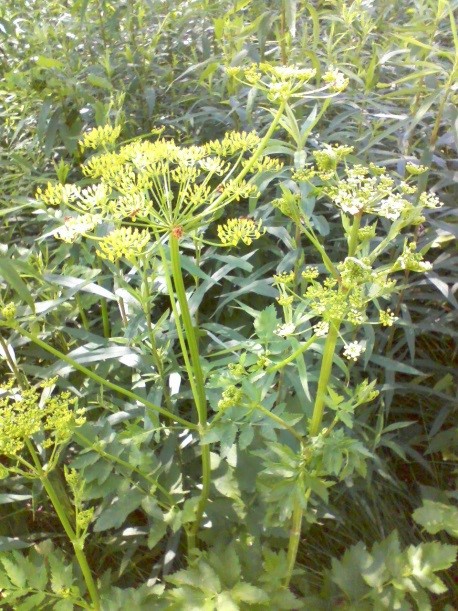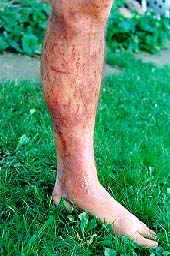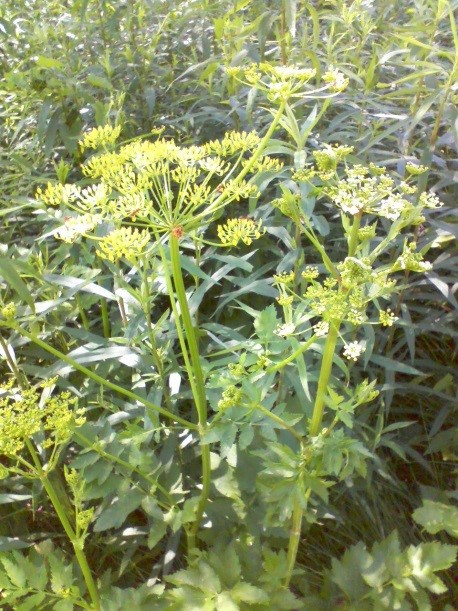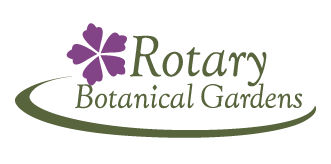
Not Wild About Wild Parsnip
Post by Janice Peterson
A volunteer at Rotary Botanical Gardens recently suggested I write about wild parsnip. He had noticed a lot of it along the bike path and was concerned path users wouldn’t know what it was. He is right to be concerned – this is one weed you definitely want to be able to identify and keep far away from!
Wild parsnip (Pastinaca sativa) has the very nasty habit of causing intense localized burns on exposed skin, often accompanied by blisters. The blisters then rupture and healing begins, but an ugly dark red or brown discoloration may remain – for up to two years!

Wild parsnip won this round against an unsuspecting leg. (Photo courtesy of Wisconsin DNR)
This skin reaction is actually triggered by sunlight in a process called phytophotoderamatitis (try saying that three times fast!). Once the sap gets onto skin it needs UV radiation from sunlight to energize its burn-causing chemicals, which is why wise gardeners will often wait until sunset before removing wild parsnip plants (and gear up in gloves, long sleeves and pants).
Wild parsnip rash is often misidentified as poison ivy. Poison ivy causes an immune response in a select group of sensitive individuals, whereas wild parsnip produces a chemical burn to everyone unfortunate enough to be exposed to its sap and sunlight.

The best defense against wild parsnip is being able to identify it. Right now look along roadsides for two- to five- foot tall, chartreuse or yellow umbels resembling Queen Anne’s lace (it should be noted that wild parsnip is a biennial that produces a low-growing rosette the first year). I see plenty of it in Janesville and surrounding areas. Be extra careful around plants that fit this description and don’t get burned by this nasty dude.
